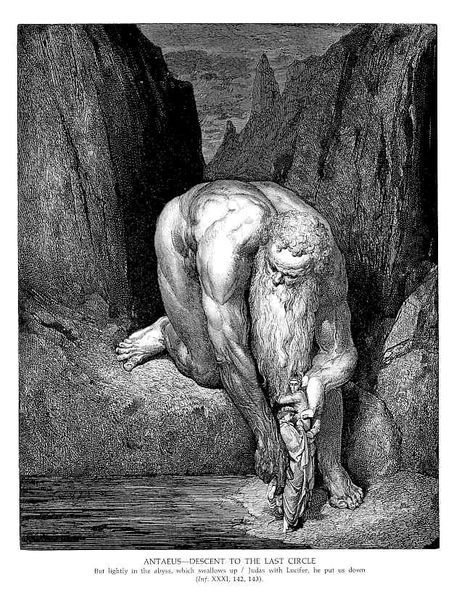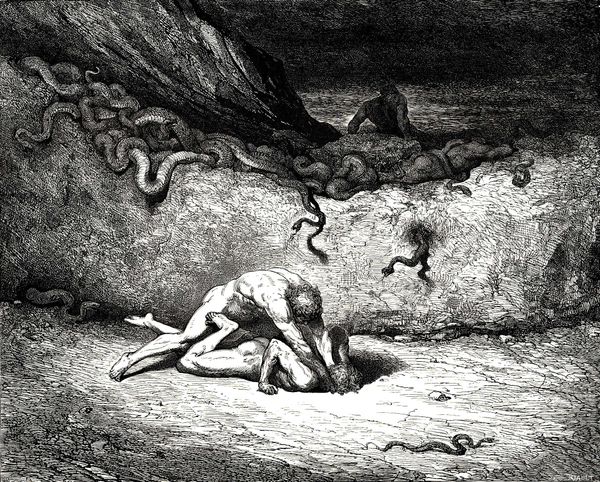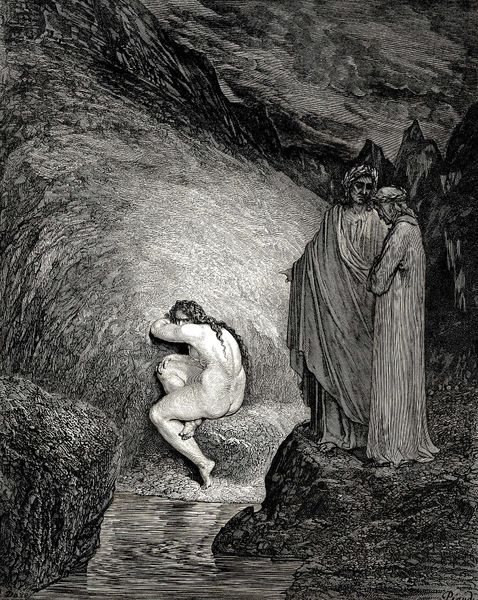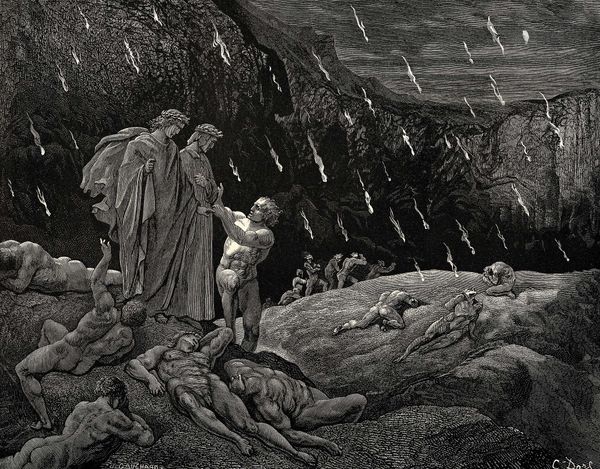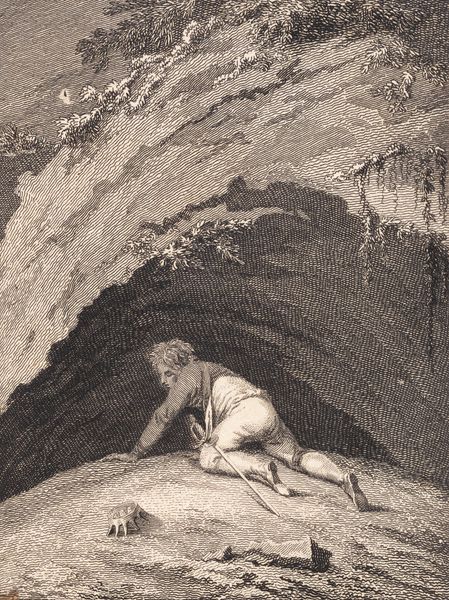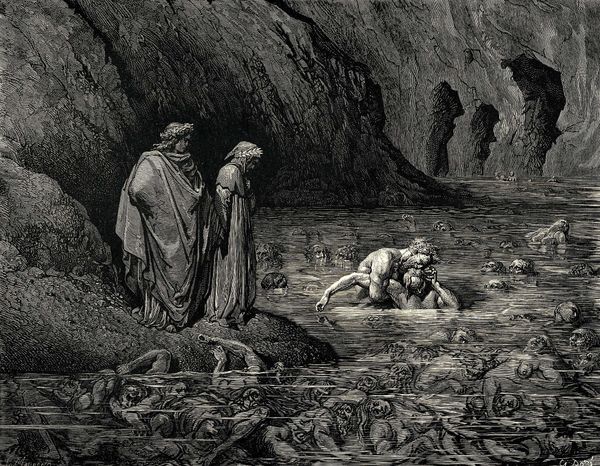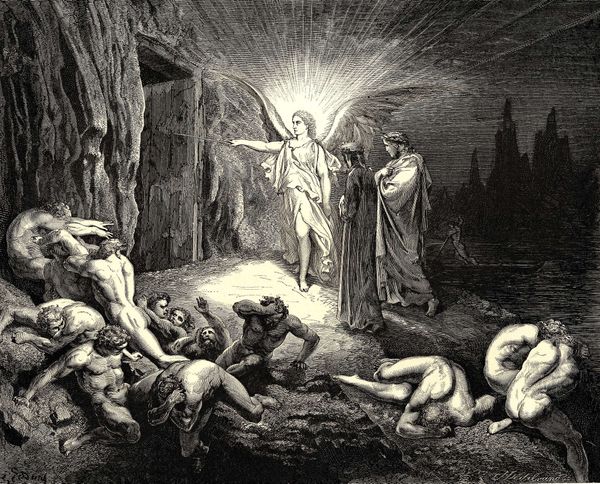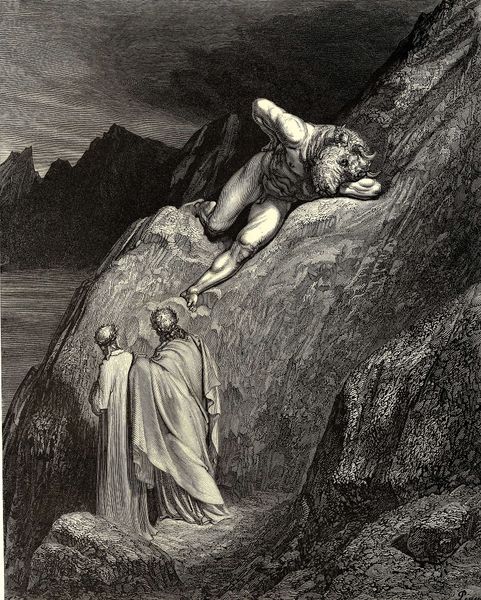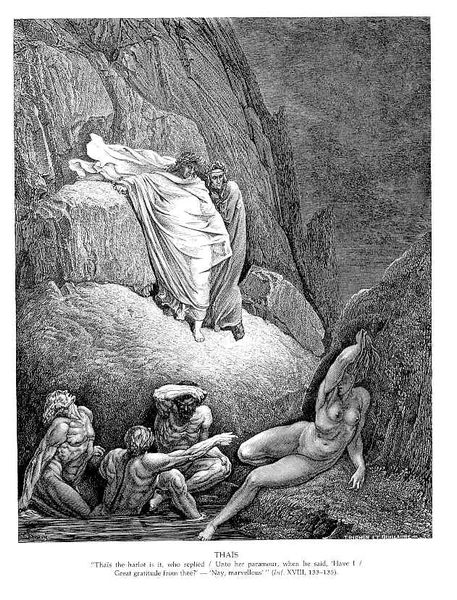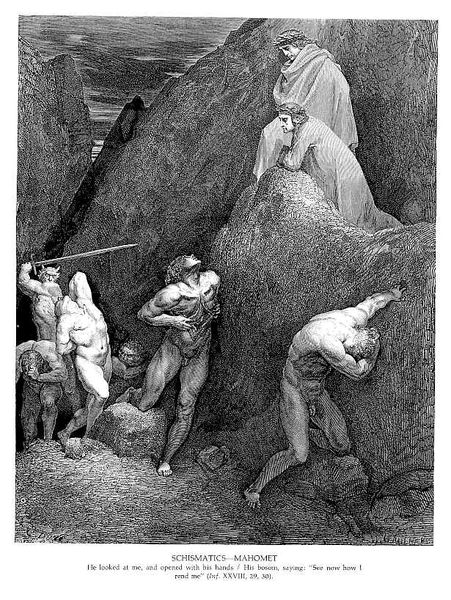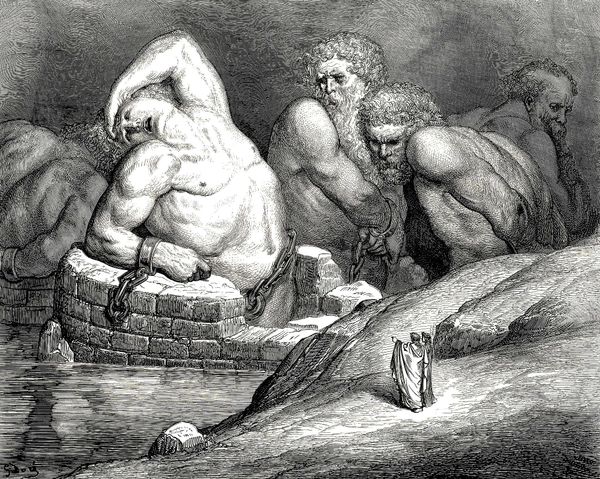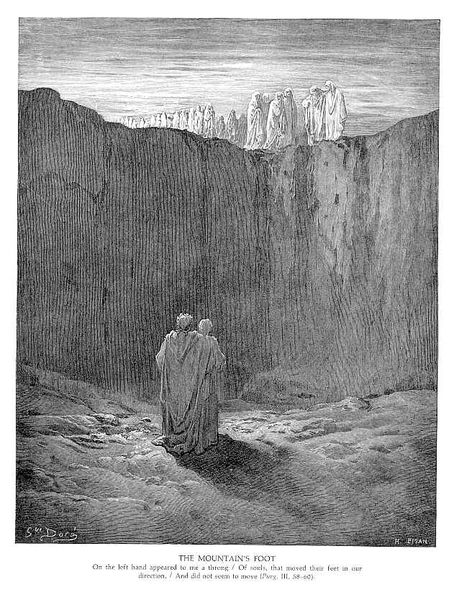
drawing, ink, graphite, engraving
#
portrait
#
drawing
#
medieval
#
narrative-art
#
sculpture
#
landscape
#
figuration
#
form
#
ink
#
romanticism
#
surrealism
#
line
#
graphite
#
haunting
#
history-painting
#
academic-art
#
engraving
Copyright: Public domain
Gustave Doré created this engraving of "The Inferno, Canto 7" in 19th-century France. Doré’s illustrations gained popularity at a time when literacy was increasing and there was a growing market for illustrated books. The image depicts a scene from Dante's Inferno, with the poets Dante and Virgil encountering the wrathful. Doré masterfully uses light and shadow to create a dramatic, even theatrical, effect, drawing the viewer into the depths of hell. It reflects the 19th-century fascination with the macabre and the sublime. The engraving was influenced by the artistic conventions of the time, including Romanticism and the Gothic Revival. But it's also a commentary on social inequality and the consequences of sin, reflecting the moral concerns of Victorian society. To fully appreciate this work, consider the historical context in which it was made, including the social, political, and religious beliefs of the time. By exploring these themes, we can gain a deeper understanding of the social role of art and its power to challenge existing norms.
Comments
No comments
Be the first to comment and join the conversation on the ultimate creative platform.

